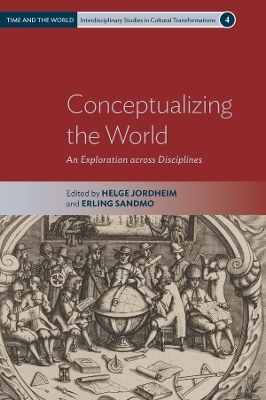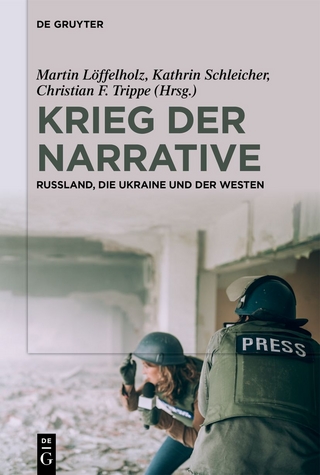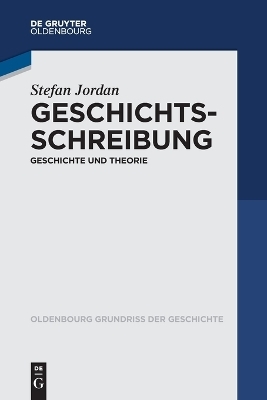
Conceptualizing the World
Berghahn Books (Verlag)
978-1-78920-036-2 (ISBN)
What is—and what was—“the world”? Though often treated as interchangeable with the ongoing and inexorable progress of globalization, concepts of “world,” “globe,” or “earth” instead suggest something limited and absolute. This innovative and interdisciplinary volume concerns itself with this central paradox: that the complex, heterogeneous, and purportedly transhistorical dynamics of globalization have given rise to the idea and reality of a finite—and thus vulnerable—world. Through studies of illuminating historical moments that range from antiquity to the era of Google Earth, each contribution helps to trace the emergence of the world in multitudinous representations, practices, and human experiences.
Helge Jordheim is a Professor of Cultural History at the University of Oslo. His latest book is a global history of the concepts of civility and civilization, written with an international team of scholars (Civilizing Emotions, 2015). At present he is writing a book on the cultural history of time in the eighteenth century.
List of Illustrations
Introduction: The World as Concept and Object of Knowledge
Helge Jordheim and Erling Sandmo
PART I: NAMING THE WORLD
Chapter 1. “World”: An Exploration of the Relationship between Conceptual History and Etymology
Ivo Spira
Chapter 2. A Multiverse of Knowledge: The Epistemology and Hermeneutics of the ʿālam in Medieval Islamic Thought
Nora S. Eggen
Chapter 3. Globalization of Human Conscience: A Modern Muslim Case
Oddbjørn Leirvik
Chapter 4. Creating World through Concept Learning
Claudia Lenz
Chapter 5. Between Metaphor and Geopolitics: The History of the Concept the Third World
Erik Tängerstad
Chapter 6. On the Dialectics of Ecological World Concepts
Falko Schmieder
PART II: ORDERING THE WORLD
Chapter 7. The Emergence of International Law and the Opening of World Order: Hugo Grotius Reconsidered
Chenxi Tang
Chapter 8. “Natural Capital,” “Human Capital,” “Social Capital”: It’s All Capital Now
Desmond McNeill
Chapter 9. The Worlds in Human Rights: Images or Mirages?
Malcolm Langford
Chapter 10. Democracy of the “New World”: The Great Binding Law of Peace and the Political System of the Haudenosaunee Confederacy
Lars Kirkhusmo Pharo
Chapter 11. The Immanent World: Responsibility and Spatial Justice
Andreas Philippopoulos-Mihalopoulos
Chapter 12. From Critical to Partisan Dictionaries; or, What Is Excluded from Today’s Flat World Orthodoxies?
Sanja Perovic
PART III: TIMING THE WORLD
Chapter 13. At Home or Away: On Nostalgia, Exile, and Cosmopolitanism
Olivier Remaud
Chapter 14. Extensions of World Heritage: The Globe, the List, and the Limes
Stefan Willer
Chapter 15. The End of the World: From the Lisbon Earthquake to the Last Days
Kyrre Kverndokk
Chapter 16. Time and Space in World Literature: Ibsen in and out of Sync
Tore Rem
PART IV: MAPPING THE WORLD
Chapter 17. Middle Age of the Globe
Alfred Hiatt
Chapter 18. The Champion of the North: World Time in Olaus Magnus’s Carta Marina
Erling Sandmo
Chapter 19. The Search for Vínland and Norse Conceptions of the World
Karl G. Johansson
Chapter 20. The Cartographic Constitution of Global Politics
Jeppe Strandsbjerg
Chapter 21. The Individual and the “Intellectual Globe”: Francis Bacon, John Locke, and Vannevar Bush
Richard Yeo
PART V: MAKING THE WORLD
Chapter 22. The World as Sphere: Conceptualizing with Sloterdijk
Kari van Dijk
Chapter 23. The Fontenellian Moment: Revisiting Seventeenth- and Eighteenth-Century Worlds
Helge Jordheim
Chapter 24. Fixating the Poles: Science, Fiction, and Photography at the Ends of the World
Siv Frøydis Berg
Chapter 25. The Norwegian Who Became a Globe: Mediation and Temporality in Roald Amundsen’s 1911 South Pole Conquest
Espen Ytreberg
Index
| Erscheinungsdatum | 01.11.2018 |
|---|---|
| Reihe/Serie | Time and the World: Interdisciplinary Studies in Cultural Transformations |
| Verlagsort | Oxford |
| Sprache | englisch |
| Maße | 152 x 229 mm |
| Themenwelt | Geisteswissenschaften ► Geschichte ► Geschichtstheorie / Historik |
| Geisteswissenschaften ► Geschichte ► Teilgebiete der Geschichte | |
| Sozialwissenschaften ► Soziologie | |
| ISBN-10 | 1-78920-036-9 / 1789200369 |
| ISBN-13 | 978-1-78920-036-2 / 9781789200362 |
| Zustand | Neuware |
| Haben Sie eine Frage zum Produkt? |
aus dem Bereich


